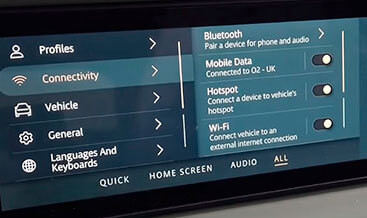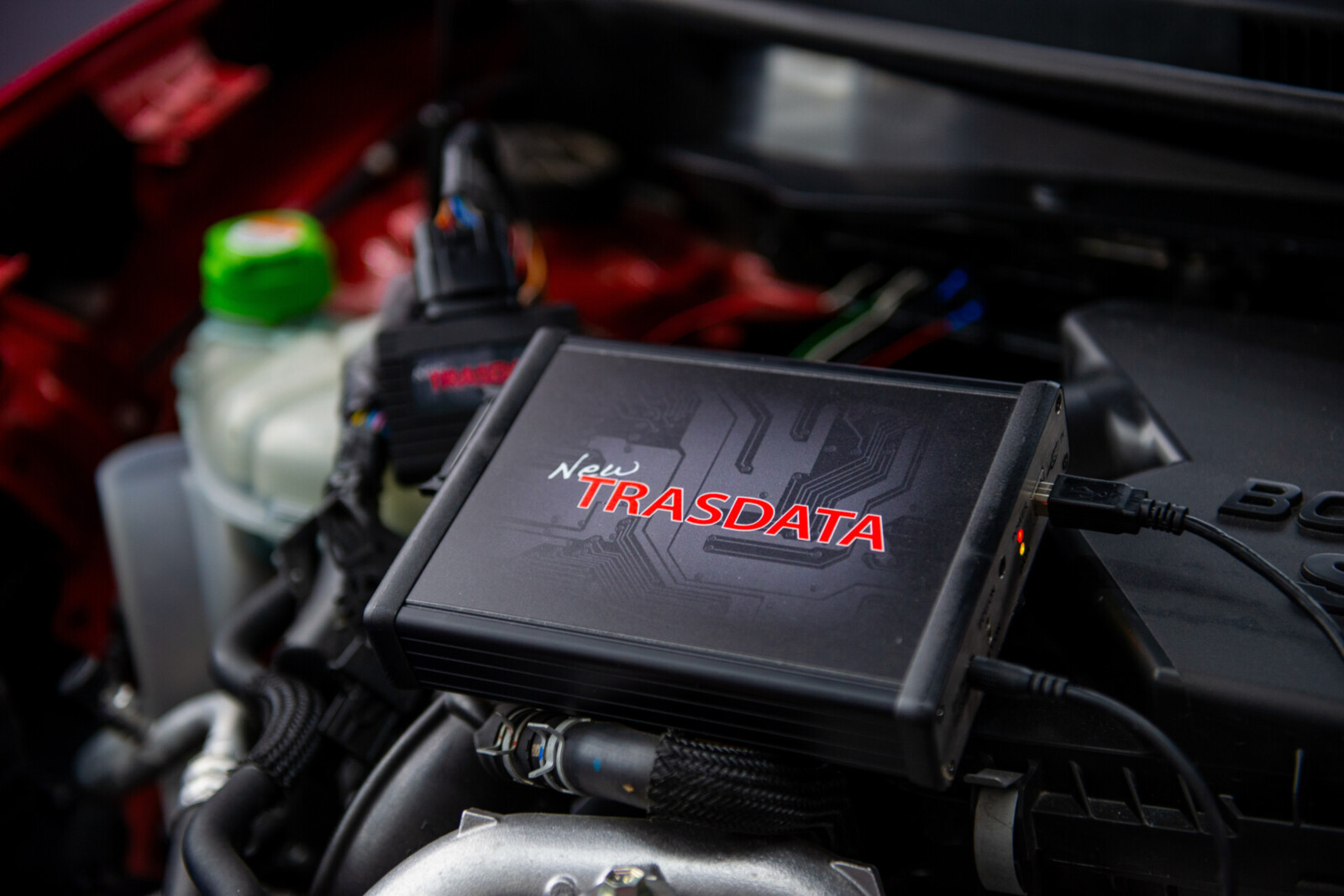LED Headlights: The Ultimate Guide to Enhanced Visibility
LED headlights are revolutionizing automotive lighting, offering superior brightness and efficiency. At CARDIAGTECH.NET, we understand the importance of clear visibility for safe driving, and we’re here to provide you with the knowledge and tools you need to upgrade your vehicle’s lighting system. Let’s explore the world of LED headlights, their benefits, regulations, and how CARDIAGTECH.NET can help you achieve optimal illumination with cutting-edge auto repair equipment.
1. Understanding LED Headlights
1.1 What are LED Lights?
LED, which stands for Light Emitting Diode, represents a groundbreaking advancement in lighting technology. These lights produce illumination up to 90% more efficiently than traditional incandescent bulbs, marking a significant leap in energy conservation. The process involves an electrical current passing through a microchip, which then illuminates the tiny LEDs to generate visible light. This method is not only more efficient but also contributes to the longevity and durability of LED headlights.
1.2 How Do LED Headlights Work?
LED headlights operate on a fundamentally different principle than traditional halogen or incandescent bulbs. Instead of heating a filament until it glows, LEDs use a semiconductor material that emits light when an electric current passes through it. This process, known as electroluminescence, is far more efficient because it converts a higher percentage of electrical energy into light, with less energy lost as heat.
Alt text: Detailed diagram of LED headlight components, showcasing the semiconductor, heat sink, and lens.
1.3 LED vs. Halogen Headlights: A Comparison
| Feature | LED Headlights | Halogen Headlights |
|---|---|---|
| Brightness (Lumens) | 3,600 – 4,500 | 900 – 1,000 |
| Energy Efficiency | Up to 90% more efficient | Lower efficiency |
| Lifespan | Significantly longer | Shorter lifespan |
| Light Quality | Brighter, whiter light | Yellowish light |
| Durability | More durable | Less durable |
| Cost | Higher initial cost | Lower initial cost |
LED headlights offer a significant upgrade over halogen bulbs in terms of brightness, efficiency, and lifespan. While the initial cost may be higher, the long-term benefits make them a worthwhile investment.
2. The Benefits of Upgrading to LED Headlights
2.1 Enhanced Visibility and Safety
One of the primary reasons drivers choose to upgrade to LED headlights is the significant improvement in visibility. LED headlights produce a much brighter and whiter light compared to traditional halogen bulbs, allowing drivers to see farther and more clearly at night or in adverse weather conditions. This enhanced visibility translates directly into improved safety for both the driver and other road users.
2.2 Increased Energy Efficiency
LED headlights are significantly more energy-efficient than halogen bulbs. They convert a higher percentage of electrical energy into light, with less energy lost as heat. This not only reduces the strain on your vehicle’s electrical system but can also contribute to better fuel economy.
2.3 Longer Lifespan and Durability
LED headlights have a significantly longer lifespan compared to halogen bulbs. While halogen bulbs typically last for a few hundred hours, LED headlights can last for tens of thousands of hours. This means less frequent replacements and lower maintenance costs over the life of your vehicle. Additionally, LED headlights are more durable and resistant to vibrations and impacts, making them a more reliable choice for automotive lighting.
2.4 Modern and Stylish Appearance
Upgrading to LED headlights can also enhance the appearance of your vehicle. LED headlights offer a modern and stylish look, and they can be designed in a variety of shapes and styles to complement the overall design of your car or truck.
3. LED Headlight Regulations and Compliance
3.1 Are LED Headlights Legal?
The legality of LED headlights can vary depending on your location and whether you are using aftermarket LED conversion kits. In the U.S. and much of Europe, LED headlights are generally legal as long as they meet certain standards and regulations. However, aftermarket LED headlights may not be compliant if they are not properly designed or installed.
3.2 Understanding U.S. Regulations
In the United States, the National Highway Traffic Safety Administration (NHTSA) sets the standards for automotive lighting. These standards are outlined in Federal Motor Vehicle Safety Standard (FMVSS) 108, which specifies the requirements for headlights, taillights, and other lighting devices. To be legal, LED headlights must comply with FMVSS 108 and be certified by the manufacturer.
3.3 Aftermarket LED Headlight Considerations
If you are considering installing aftermarket LED headlights, it’s essential to ensure that they are DOT (Department of Transportation) approved and meet all applicable regulations. Non-compliant LED headlights can be a safety hazard and may result in fines or failed vehicle inspections.
3.4 The Role of the Soft Lights Foundation
The Soft Lights Foundation is a non-profit organization that advocates for safer and more comfortable lighting. They have raised concerns about the intensity and glare of LED headlights and have petitioned the NHTSA to set limits on headlight intensity. While there is currently no limit on how bright headlights can be, it’s important to be aware of these concerns and choose LED headlights that provide adequate illumination without causing excessive glare.
4. Addressing LED Headlight Glare
4.1 The Issue of Headlight Glare
One of the main concerns associated with LED headlights is the potential for glare, which can make it difficult for other drivers to see. Brighter lights produce more glare, especially for older drivers or those with certain vision conditions. It’s essential to choose LED headlights that are properly designed to minimize glare and comply with safety standards.
4.2 Adaptive Driving Beam (ADB) Technology
To address the issue of headlight glare, many modern vehicles are equipped with Adaptive Driving Beam (ADB) technology. ADB systems use sensors and cameras to detect other vehicles on the road and automatically adjust the headlight beam to avoid causing glare. This technology allows drivers to use their high beams more often, improving visibility without blinding other drivers.
4.3 The NHTSA’s Final Rule on ADB
In 2022, the NHTSA issued a final rule allowing automakers to install adaptive driving beam headlights on new vehicles in the United States. This rule aligns U.S. regulations with those in Europe, where ADB technology has been standard for several years.
4.4 Tips for Reducing Glare as a Driver
If you are experiencing glare from other vehicles’ headlights, there are several steps you can take to reduce its impact:
- Keep your windshield clean: Dirt and grime on the windshield can scatter light and exacerbate glare.
- Adjust your mirrors: Adjust your rearview and side mirrors to minimize glare from headlights behind you.
- Look away: When faced with bright headlights, avert your gaze to the right side of the road to avoid being blinded.
- Wear protective eyewear: Consider using night vision glasses or other eyewear designed to reduce glare.
4.5 Anti-Glare Film and Night Settings
Drivers can also purchase anti-glare film for their rearview mirrors to reduce brightness from other vehicles. Additionally, many vehicles have a night setting in their rearview mirror. Drivers who have a lever under their mirror can pull it toward them to activate it.
5. Choosing the Right LED Headlights
5.1 Factors to Consider
When choosing LED headlights for your vehicle, there are several factors to consider:
- Brightness: Look for headlights with adequate brightness (measured in lumens) for your driving needs.
- Beam Pattern: Choose headlights with a beam pattern that provides good visibility without causing excessive glare.
- Color Temperature: Select a color temperature (measured in Kelvin) that is comfortable for your eyes and provides good contrast.
- Durability: Look for headlights that are made from high-quality materials and are designed to withstand the rigors of daily driving.
- Compliance: Ensure that the headlights are DOT approved and meet all applicable regulations.
5.2 Understanding Lumens, Beam Patterns, and Color Temperature
- Lumens: Lumens measure the total amount of light emitted by a light source. Higher lumens generally indicate brighter headlights.
- Beam Pattern: The beam pattern refers to the shape and distribution of light projected by the headlights. A well-designed beam pattern will provide good visibility in front of the vehicle without causing excessive glare to oncoming drivers.
- Color Temperature: Color temperature is measured in Kelvin (K) and describes the color of the light emitted by the headlights. Lower color temperatures (e.g., 3000K) produce a warmer, yellowish light, while higher color temperatures (e.g., 6000K) produce a cooler, whiter light.
Alt text: Color temperature chart illustrating the range from warm yellow to cool blue light, measured in Kelvin.
5.3 Top LED Headlight Brands
Several reputable brands offer high-quality LED headlights for automotive applications. Some of the top brands include Philips, Osram, and Sylvania. These brands are known for their quality, performance, and compliance with safety standards.
5.4 Avoiding Counterfeit Products
When purchasing LED headlights, it’s essential to be wary of counterfeit products. Counterfeit headlights may not meet safety standards and can be a safety hazard. Purchase headlights from reputable sources and look for certifications and approvals to ensure that you are getting a genuine product.
6. Installing LED Headlights
6.1 DIY vs. Professional Installation
Installing LED headlights can be a straightforward process for some vehicles, while others may require professional installation. If you are comfortable working on your vehicle and have some mechanical experience, you may be able to install LED headlights yourself. However, if you are unsure or uncomfortable, it’s best to have them installed by a qualified mechanic.
6.2 Step-by-Step Installation Guide
Here is a general step-by-step guide for installing LED headlights:
- Gather your tools: You will need a screwdriver, socket set, and possibly a trim removal tool.
- Disconnect the battery: Disconnect the negative terminal of your vehicle’s battery to prevent electrical shocks.
- Remove the old headlights: Remove the screws or clips that hold the old headlights in place and disconnect the electrical connectors.
- Install the new LED headlights: Connect the electrical connectors to the new LED headlights and secure them in place with the screws or clips.
- Test the headlights: Reconnect the battery and test the new LED headlights to ensure that they are working properly.
- Adjust the headlights: Adjust the headlights to ensure that they are properly aligned and providing optimal visibility.
6.3 Ensuring Proper Alignment
Proper headlight alignment is crucial for ensuring optimal visibility and avoiding glare to other drivers. After installing new LED headlights, it’s essential to have them properly aligned. You can use a headlight aiming tool or take your vehicle to a mechanic for professional alignment.
6.4 Common Installation Mistakes to Avoid
Some common mistakes to avoid when installing LED headlights include:
- Forgetting to disconnect the battery: Always disconnect the battery before working on your vehicle’s electrical system.
- Damaging the electrical connectors: Be careful when disconnecting and connecting the electrical connectors to avoid damaging them.
- Improperly securing the headlights: Ensure that the headlights are securely fastened in place to prevent them from vibrating or falling out.
- Failing to align the headlights: Always align the headlights after installation to ensure optimal visibility.
7. Maintaining Your LED Headlights
7.1 Cleaning and Care Tips
To keep your LED headlights in good condition, it’s important to clean them regularly. Use a soft cloth and mild detergent to remove dirt and grime from the lens. Avoid using abrasive cleaners or solvents, as they can damage the lens.
7.2 Troubleshooting Common Issues
Some common issues that may arise with LED headlights include flickering, dimming, or complete failure. These issues can often be resolved by checking the electrical connections, replacing the LED bulb, or replacing the headlight assembly.
7.3 When to Replace Your LED Headlights
While LED headlights have a long lifespan, they will eventually need to be replaced. If you notice that your LED headlights are dimming, flickering, or not working properly, it’s time to replace them.
8. The Future of LED Headlight Technology
8.1 Emerging Trends and Innovations
The field of LED headlight technology is constantly evolving, with new trends and innovations emerging all the time. Some of the emerging trends include:
- Laser Headlights: Laser headlights offer even greater brightness and efficiency than LED headlights.
- Digital Light: Digital light technology uses millions of micro-mirrors to precisely control the headlight beam and provide optimal illumination in all conditions.
- OLED Headlights: OLED (Organic Light Emitting Diode) headlights offer a more uniform and aesthetically pleasing light source.
8.2 Potential Improvements in Safety and Efficiency
The future of LED headlight technology holds great promise for improving safety and efficiency on the road. As new technologies emerge, we can expect to see even brighter, more efficient, and more intelligent headlights that provide optimal visibility in all conditions.
8.3 Integration with Autonomous Driving Systems
As autonomous driving technology continues to develop, LED headlights will play an increasingly important role in providing information to the vehicle’s sensors and cameras. Advanced headlight systems will be able to communicate with the vehicle’s autonomous driving systems to provide optimal illumination and safety in all driving scenarios.
9. CARDIAGTECH.NET: Your Partner in Automotive Lighting Solutions
At CARDIAGTECH.NET, we are committed to providing our customers with the highest quality automotive lighting solutions. We offer a wide range of LED headlights, diagnostic tools, and repair equipment to help you upgrade your vehicle’s lighting system and ensure optimal visibility and safety on the road.
9.1 Our Range of LED Headlight Products
We offer a comprehensive selection of LED headlights for a variety of makes and models. Our products are sourced from reputable manufacturers and are guaranteed to meet the highest standards of quality and performance.
9.2 Diagnostic Tools and Equipment for Headlight Repair
In addition to LED headlights, we also offer a range of diagnostic tools and equipment to help you troubleshoot and repair headlight issues. Our diagnostic tools can help you identify problems with your vehicle’s electrical system, headlight wiring, or headlight assembly.
9.3 Expert Support and Guidance
Our team of experienced technicians is available to provide expert support and guidance to help you choose the right LED headlights for your vehicle and troubleshoot any issues that may arise. We are committed to providing our customers with the best possible service and support.
9.4 Why Choose CARDIAGTECH.NET?
Choosing CARDIAGTECH.NET means you’re opting for quality, expertise, and a commitment to customer satisfaction. We understand the challenges you face in the auto repair industry – the physical demands, the need for constant learning, and the pressure to deliver efficient and accurate service. That’s why we provide not only top-notch products but also the support and knowledge you need to excel.
Alt text: Exterior view of CARDIAGTECH.NET facility, showcasing our commitment to providing high-quality auto repair solutions.
10. Addressing Customer Challenges with CARDIAGTECH.NET
10.1 Enhancing Efficiency and Reducing Repair Time
Our diagnostic tools and equipment are designed to help you work more efficiently and reduce repair time. With our advanced tools, you can quickly identify and resolve headlight issues, saving time and money.
10.2 Increasing Accuracy and Safety
Our LED headlights and diagnostic tools are designed to help you work more accurately and safely. With our high-quality products, you can ensure that your vehicle’s lighting system is functioning properly and providing optimal visibility.
10.3 Saving on Repair and Maintenance Costs
By upgrading to LED headlights and using our diagnostic tools, you can save on repair and maintenance costs in the long run. LED headlights have a longer lifespan than halogen bulbs, reducing the need for frequent replacements. Our diagnostic tools can help you identify and resolve issues before they become major problems, saving you money on costly repairs.
10.4 Boosting Revenue and Profitability
By offering high-quality LED headlight upgrades and using our diagnostic tools, you can boost your revenue and profitability. LED headlights are a popular upgrade for many drivers, and you can charge a premium for installing them. Our diagnostic tools can help you provide more efficient and accurate service, increasing customer satisfaction and generating repeat business.
FAQ: Your Questions About LED Headlights Answered
- Are LED headlights brighter than halogen? Yes, LED headlights are significantly brighter than halogen headlights, typically producing 3,600 to 4,500 lumens compared to 900 to 1,000 lumens for halogen bulbs.
- Are LED headlights legal in the U.S.? Generally, yes, LED headlights are legal in the U.S. as long as they comply with Federal Motor Vehicle Safety Standard (FMVSS) 108.
- Do LED headlights cause more glare? LED headlights can cause more glare if they are not properly designed or aligned. Adaptive Driving Beam (ADB) technology can help reduce glare.
- How long do LED headlights last? LED headlights typically last for tens of thousands of hours, significantly longer than halogen bulbs.
- Can I install LED headlights myself? Installing LED headlights can be a straightforward process for some vehicles, while others may require professional installation.
- How do I choose the right LED headlights? Consider factors such as brightness, beam pattern, color temperature, durability, and compliance with regulations when choosing LED headlights.
- What is color temperature? Color temperature is measured in Kelvin (K) and describes the color of the light emitted by the headlights.
- What is Adaptive Driving Beam (ADB) technology? ADB technology uses sensors and cameras to detect other vehicles on the road and automatically adjust the headlight beam to avoid causing glare.
- How do I reduce glare from other vehicles’ headlights? Keep your windshield clean, adjust your mirrors, look away from bright headlights, and consider wearing protective eyewear.
- Where can I buy high-quality LED headlights and diagnostic tools? CARDIAGTECH.NET offers a wide range of LED headlights, diagnostic tools, and repair equipment.
Take Action Today
Ready to upgrade your vehicle’s lighting system and experience the benefits of LED headlights? Contact CARDIAGTECH.NET today to learn more about our products and services. Our team of experts is here to help you choose the right LED headlights for your vehicle and provide the support you need to ensure optimal visibility and safety on the road.
Don’t let dim headlights compromise your safety. Invest in high-quality LED headlights from CARDIAGTECH.NET and enjoy brighter, more efficient, and more reliable lighting. Contact us today!
Address: 276 Reock St, City of Orange, NJ 07050, United States
WhatsApp: +1 (641) 206-8880
Website: CARDIAGTECH.NET
By choosing CARDIAGTECH.NET, you’re not just buying products; you’re investing in a partnership that values your success and safety. Our commitment to providing top-tier tools and support ensures that you can confidently tackle any job, improve your efficiency, and enhance your reputation. Contact us today and let us help you transform your auto repair business.






